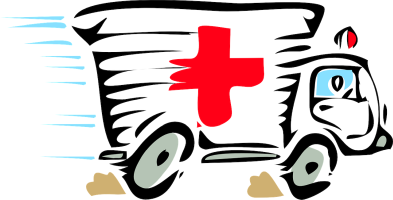Signs of an “Emergency Headache”
This month the National Neurosciences Advisory Group in the UK published a paper of recommendations for headache and facial pain diagnosis and treatment. Part of the purpose of the document was to help doctors recognize emergency situations.

Today we’ll take a look at that part of the paper as a reminder of certain signs to look for if you are someone you love is experiencing new or changed symptoms. This is just a summary, you can view the full paper below.
New Headache
New or changed symptoms are always a reason to get to a doctor as soon as possible. But there are certain symptoms that could especially be signs of an emergency:
- A new headache late in your pregnancy, or soon after the birth of your baby.
- You’re over 50 years old – your doctor may want to test for inflammation (ESR test)
- Neurological symptoms such as problems speaking, hearing, or seeing, or even feeling (numbness, pins and needles…). If these symptoms are getting worse, that’s another urgent sign.
- Seizures
- Unusual changes in personality or trouble thinking. “Unusual” because we’re assuming this is not a known mental or physical illness. This is something that needs to be noticed by someone else.
Other New Facial Pain
- Jaw pain in patients taking bisphosphonates (a group of medications designed to increase bone density)
- New pain in your temple, especially if you’re over 50
Other Headaches/Facial Pain
- Any headache with a change in consciousness, drowsiness, or fainting
- Thunderclap headache (headaches that appear suddenly and are at “full power” in 60 seconds or less)
- Headache or facial pain with other symptoms such as fever, vomiting, visual problems, etc.
- Headache or facial pain when you already have related medical problems or a history of them
- Red eyes with headache (especially in seniors)
- Trigeminal Neuralgia – sudden severe facial pain (like an electric shock)
- Facial pain with a nosebleed, thick coloured nasal discharge, continuous change in your sense of smell, hearing loss on the same side as the pain
This might sound confusing, but it really can be summarized for the most part in new or changed headache, facial pain, or accompanying symptoms.
But whereas some mild changes or progressions might mean booking an appointment, when the symptoms are sudden and show signs of neurological problems and serious illness, going to emergency right away is important. There are also symptoms that may be ongoing that should be watched carefully and continuously.
These symptoms are also an important reminder to be aware of your friends and family. You may notice certain things before they do, and you can help them get the treatment they need.
Headaches are common, but they’re not “normal”. And at times they can be an important warning that immediate treatment is needed. Don’t ignore them.
To read the full report, go to Optimal clinical pathway for adults with headache and facial pain and download the pdf version.
